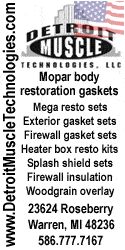I am trying to align my car after replacing front end parts. I see the quote:
From Jim Lusk:
"Have them start with the front cam all the way out and the rear cam all the way in. Move the rear cam out until camber is in spec (1/2 deg. neg is good). This is the most positive caster that is available without new parts (offset bushings, tubular upper control arms, etc.). All of this is AFTER setting ride height. I usually set ride height with about an inch between the LCA bumper and the frame, then even the sides up."
My question is this: what does it mean when the front cam is all the way in? Does that mean the high eccentric part of the cam is pointing to the top, side, etc.? Trying to be crystal clear.
From Jim Lusk:
"Have them start with the front cam all the way out and the rear cam all the way in. Move the rear cam out until camber is in spec (1/2 deg. neg is good). This is the most positive caster that is available without new parts (offset bushings, tubular upper control arms, etc.). All of this is AFTER setting ride height. I usually set ride height with about an inch between the LCA bumper and the frame, then even the sides up."
My question is this: what does it mean when the front cam is all the way in? Does that mean the high eccentric part of the cam is pointing to the top, side, etc.? Trying to be crystal clear.


 I'd rather hit them with a swatter.
I'd rather hit them with a swatter.














